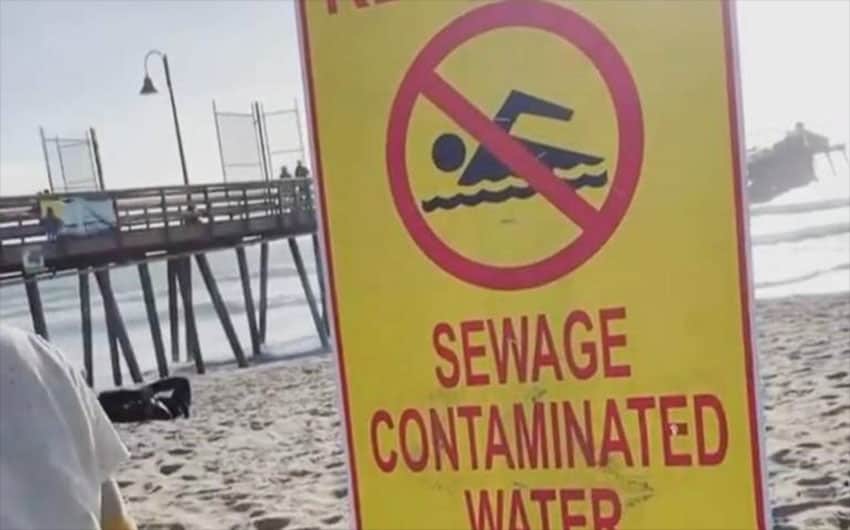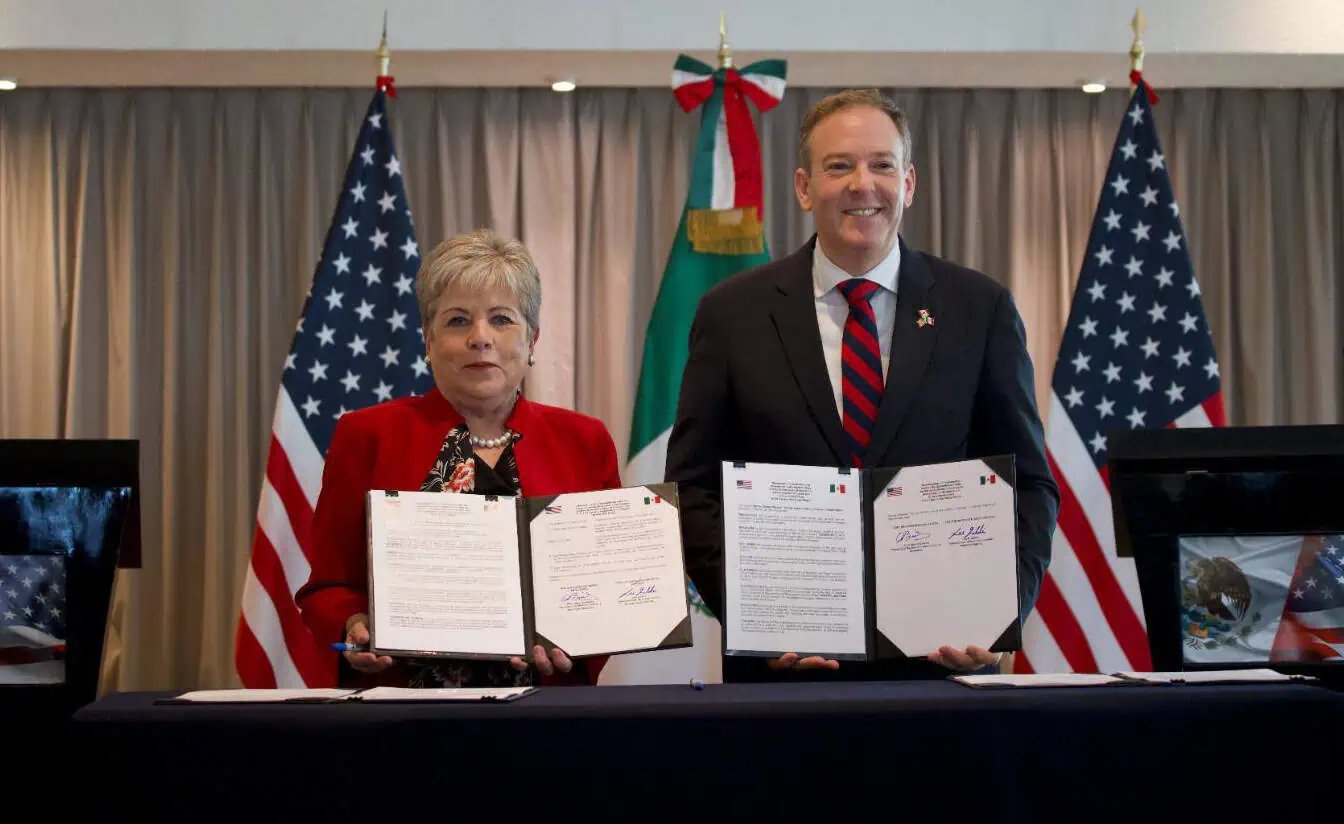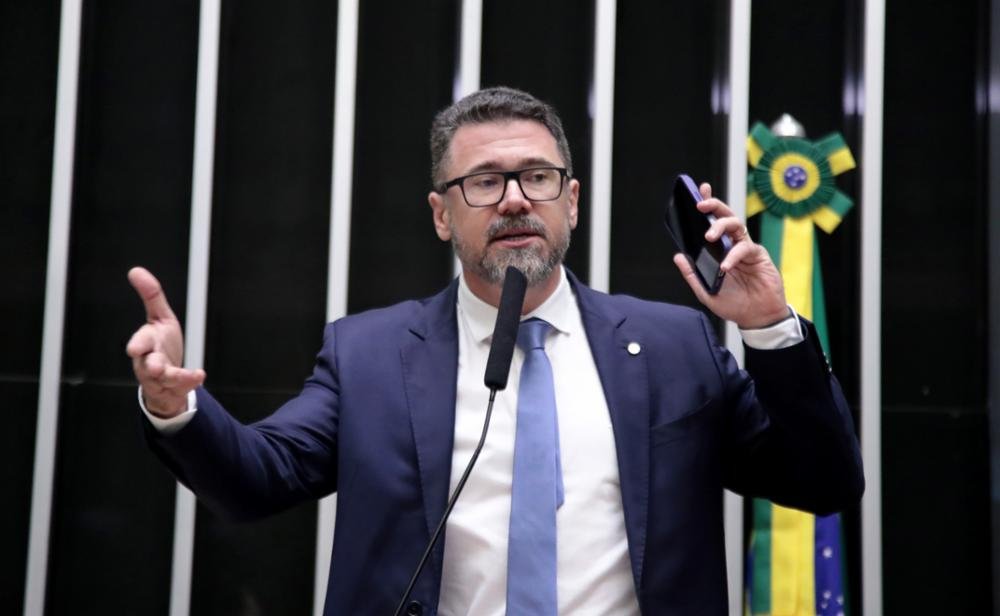Mexico and the United States reached an agreement on Thursday that aims to permanently fix a long-running environmental problem in which Mexican sewage flows into the Pacific Ocean off the coast of southern California after crossing the border via the Tijuana River.
Mexico’s Environment Minister Alicia Bárcena and U.S. Environmental Protection Agency (EPA) Administrator Lee Zeldin signed a memorandum of understanding (MOU) in Mexico City that seeks to address “the sanitation and environmental crisis in the Tijuana–San Diego Region.”

The MOU states that there is a shared desire to “coordinate cross-border solutions that permanently stop untreated wastewater from polluting coastal communities, harming public health, and damaging the environment on both sides of the border.”
The document outlines commitments of both Mexico and the United States that are aimed at achieving those objectives. One of Mexico’s commitments is to allocate US $93 million in 2026 and 2027 to “facilitate completion” of a number of projects to improve the Tijuana sewage system by December 31, 2027, “or sooner.”
The EPA said in a statement that the MOU “achieves the three top Trump Administration priorities and milestones critical to ensuring a 100% solution” to the sewage crisis in the Tijuana-San Diego area.
The agency noted that Mexico will allocate $93 million to sewage system projects and that the timeline for the completion of those projects has been reduced by up to four years in some cases. It also said that “several necessary Mexico side projects have been added to account for future population growth in Tijuana and operation and maintenance costs.”
Zeldin declared that “the Trump Administration is proud to deliver this massive environmental and national security win for Americans in the San Diego area who have been living with this disgusting raw sewage flowing into their communities for far too long.”
He emphasized the need for speed in the completion of projects to solve the sewage crisis, telling reporters “that if any speed changes, that speed will have to be a speed to go faster.”
Earlier this year, Zeldin accused Mexico of being too slow to complete projects it has committed to carrying out in Tijuana, where the population and industry have grown significantly in recent decades and wastewater treatment plants and other sewage infrastructure have become ineffective.
The signing of the MOU came three months after the EPA chief said that Mexico must act to stop the massive flow of sewage and toxic chemicals from the Tijuana River into the Pacific Ocean.
The sewage has contaminated the coastline of southern California for years, and sickened U.S. Navy seals, Border Patrol agents, beach users and others.
Bárcena said on Thursday that Mexico and the United States are committed to solving the binational sewage problem “once and for all.”
She highlighted that the MOU is “the first binational agreement … between Mexico and the United States under the administration of President Donald Trump and President Claudia Sheinbaum.”
“There is a great commitment on the part of both countries to strengthen cooperation and this is what we’re demonstrating today,” Bárcena said.
The agreement comes at a time when there are range of tensions in the Mexico-United States relationship, including ones related to trade and drug trafficking.
The memorandum in detail
The MOU states that Mexico “intends to immediately seek internal funding” to initiate construction of two projects in 2025.
One US $13.3-million project will divert 10 million gallons per day of treated effluent to the Rodríguez Dam, located upstream on the Tijuana River.
Another $8.4-million project will rehabilitate the Parallel Gravity Line, a major wastewater pipeline.
Those two projects will be completed by the end of 2025, the EPA said.
The $93 million in funding to be used in 2026 and 2027 is to rehabilitate various sewers in the Tijuana sewage system and to carry out upgrades to the Arturo Herrera and La Morita wastewater treatment plants, among other projects. That money is so-called “Minute 328 funds,” part of a financial commitment Mexico pledged to make in accordance with a 2022 agreement.
Bárcena said that Mexico is also committed to doubling the capacity of the San Antonio de los Buenos wastewater treatment plant. The Environment Ministry said in a statement that it is “exploring financing alternatives” to achieve that goal, including the possibility of accessing “support” from the EPA “through existing mechanisms at the North American Development Bank.”
🇺🇸🇲🇽 Major Milestone Reached! The US & Mexico are collaborating to improve water infrastructure in the Tijuana River watershed. The US will fund key projects, continue expanding the South Bay wastewater plant capacity, and inform Mexico of trash removal expenses. Mexico will… pic.twitter.com/T9nk7WRIuQ
— U.S. International Boundary and Water Commission (@usibwc) July 25, 2025
The San Antonio de los Buenos plant “had been spewing at least 23 million gallons of sewage per day (1,000 liters per second) into the Pacific Ocean” before recent repairs, Reuters reported.
Even now, “millions of gallons of treated and untreated sewage from Tijuana’s overburdened [sewage] system makes its way daily into the Tijuana River and reaches the ocean in the San Diego suburb of Imperial Beach,” the news agency said.
Among the United States’ commitments, as detailed in the MOU, is to release EPA Border Water Infrastructure Program funding to complete the rehabilitation of Pump Station 1 in San Diego as well as Tijuana River collection pipes. Pump Station 1 treats sewage pumped in from Tijuana.
The United States also committed to “expand treatment capacity” at the South Bay International Wastewater Treatment Plant in San Diego “from 25 to 50 million gallons per day (‘MGD’) by December 2027, with an interim expansion to 35 MGD by August 2025.”
That plant also treats sewage from Tijuana.
The MOU also states that Mexico and the United States “intend to enter into a new Minute by December 31, 2025, or sooner,” that will contain a number of actions to be “executed immediately through existing or new binational workgroups led by the two Sections of IBWC” — the International Boundary and Water Commission.
Among the 13 actions are to:
- Initiate engineering and financial studies to assess the feasibility of installing an ocean outfall at the San Antonio de los Buenos plant in Tijuana.
- Assess the technical and financial feasibility of expanding treatment capacity of the San Antonio de los Buenos plant from 18.26 to 43.37 million gallons per day.
- Develop a routine schedule and cost-sharing formula for cleaning and sediment dredging operations in the Tijuana River.
- Develop a Tijuana water infrastructure master plan to ensure that sufficient water infrastructure is planned and constructed commensurate with anticipated population growth.
The MOU states that the 13 actions “are deemed necessary to ensure a comprehensive and durable solution to address transboundary wastewater management issues, human health concerns, and environmental conditions in the Tijuana River watershed.”
On Friday morning, President Sheinbaum described the MOU as a “very important agreement” and highlighted that the United States is committing $600 million to projects in the San Diego area.
“It’s a comprehensive bilateral agreement,” she said.
With reports from Reuters, NBC San Diego and La Jornada




